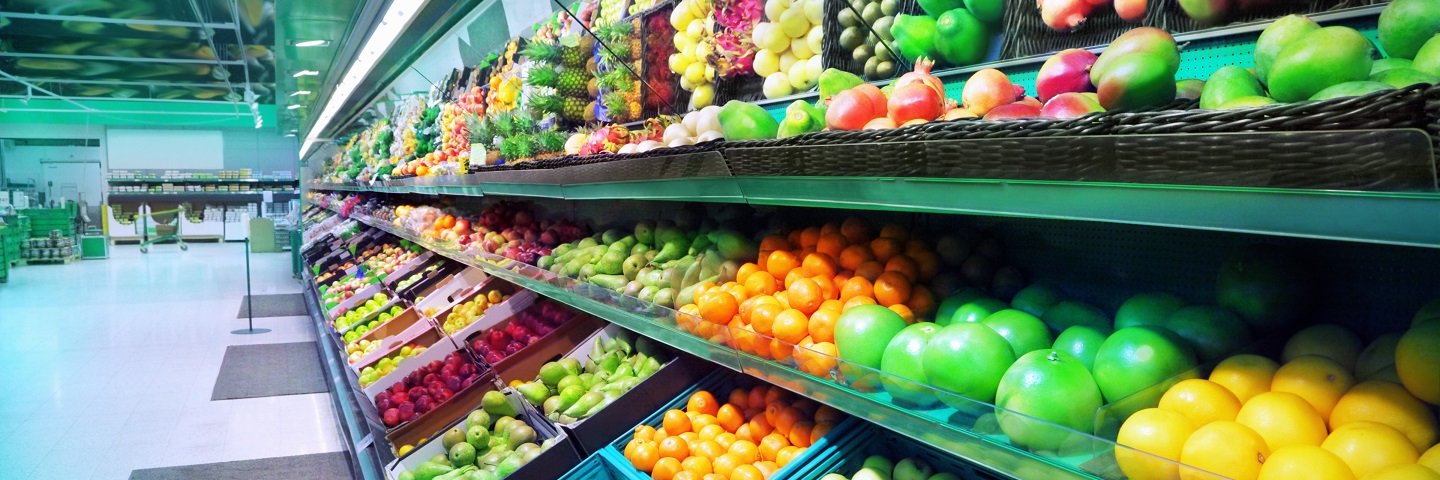
Visit our other sites
-
Fapas - Proficiency Testing
Globally recognised provider of proficiency tests, running over 400 tests annually across an extensive range of matrices and analytes
-
Great Crested Newts Testing
A single sample taken by an ecologist at any time during the newt breeding season can determine their presence or absence, saving you time and money
Dr Adrian Charlton is a protein biochemist with over 20 years of experience in the field and approximately 50 peer reviewed publications.


Find Adrian on: LinkedIn
-
Area of expertise
Protein Biochemistry, Food Safety
-
Years of experience
20+
-
Highest qualification
PhD
The main focus of the work performed at Fera includes surveillance of the main classes of contaminants that are regulated in the human and animal feed supply chain. These include; heavy metals, pesticides, veterinary medicines, dioxins/PCBs, PAHs and mycotoxins. The team also undertake surveillance and research into the potential for allergens in both food and feed.
Dr Charlton and his team undertake research using advanced analytical approaches such as nuclear magnetic resonance (NMR) spectroscopy and high-resolution mass spectrometry (HR-MS) to develop rapid and holistic testing methods for a range of food and feed chemicals. Other interests include the development of non-targeted analysis approaches by integrating analytical chemistry with bioinformatics and advanced mathematics. This work supports protein and metabolite identification, underpinning the teams work in providing essential government/commercial services for identifying emerging chemical and microbiological threats.
Dr Charlton regularly provides keynote and plenary lectures at international conferences often speaking about advances in the fields of proteomics and metabolomics as applied to food and feed authenticity/safety. He is an international expert in relation to the authenticity of food and of honey and wine in particular. He has published approximately 50 peer reviewed papers. He has a wide network of academic and industrial collaborators and is consultant to a range of food industry and government clients. He regularly lectures at the Universities of York and Essex.
Committee and Professional Body Memberships:
- Member of the FAO/WHO expert panel on Hazards in Animal Feed.
- Member of EFSA working group on the safety of insects as food and feed.
- Associate Editor Journal of Insects as Food and Feed.
- Former steering group member for Defra Pulse Crop Genetic Improvement network.
- UK national expert to DG SANTE in relation to honey analysis.
- UK national expert to DG SANTE in relation to wine analysis.
- Chair of EU FP7 project ABSTRESS management board.
- Member of FP7 project PROteINSECT management board.
- Member of the advisory board for the mathematics department at the University of York.
- Member of the advisory board for the Centre of Excellence for Mass Spectrometry.
- Scientific committee for the International Legume Society.
Our contaminant testing services
Our experts focus on the scientific research relating to intentionally added food components and to those arising from chemical changes during food processing, bioactive chemicals and natural toxicants.
Latest Papers and Articles
2016 M. R. Romero, A. J. Claydon, E.C. Fitches, M. E. Wakefield & A. J. Charlton (2016). Sequence homology of the fly proteins tropomyosin, arginine kinase and myosin light chain with known allergens in invertebrates. Journal of Insects as Food and Feed, in press. https://doi.org/10.3920/JIFF2015.0067
2015 Sapp, M., Harrison, M., Hany, U., Charlton, A.J. & Thwaites, R. (2015) Comparing the effect of digestate and chemical fertiliser on soil bacteria. Applied Soil Ecology 86, 1-9.
2015 Charlton, A.J., Dickinson, M.J., Wakefield, M., Fitches, E., Kenis, M., Han, R., Zhu, F., Kone, N., Grant, M., Devic, E., Bruggeman, G. (2015) Assessing the chemical safety of fly larvae as a source of protein for animal feed. Journal of Insects as Food and Feed 1(1), 7–16.
2014 Lloyd, L.S., Asghar, A., Burns, M.J., Charlton, A.J., Coombes, S., Cowley, S.J., Dear, G.J., Duckett, S.B. Genov, G.R., Green, G.G.R., Highton, L.A.R., Hooper, A.J.J., Khan, M., Khazal, I.G., Lewis, R.J., Mewis, R.E., Roberts, A.D., Ruddlesden, A.J. (2014) Hyperpolarisation through reversible interactions with parahydrogen Catal. Sci. Technol., 4, 3544-3554. https://doi.org/10.1039/C4CY00464G
2014 Rusilowicz, M, O’Keefe, S., Wilson, J. & Charlton, A.J. (2014) Chemometrics Applied to NMR Analysis. Encyclopaedia of Analytical Chemistry. pp 1-32 https://doi.org/10.1002/9780470027318.a9300

Adrian and their team work with customers to deliver the following services within Fera...
Surveillance of the main classes of contaminants that are regulated in the human and animal feed supply chain. These include; heavy metals, pesticides, veterinary medicines, dioxins/PCBs, PAHs and mycotoxins.

Food Contact Materials Testing
Our work involves targeted and non targeted analysis of known and unknown migrants. Analysis can be carried out in complex matrices (foods, food simulants and food contact materials and articles) utilising a range of advanced chromatographic and mass spectrometric techniques.

Contaminant Testing
Our experts focus on the scientific research relating to intentionally added food components and to those arising from chemical changes during food processing, bioactive chemicals and natural toxicants.

Authenticity Testing
Fera's analysts use industry leading techniques and cutting edge technologies to ensure compliance with food safety regulations, protecting public health and traceability.
Latest Papers and Articles
2016 M. R. Romero, A. J. Claydon, E.C. Fitches, M. E. Wakefield & A. J. Charlton (2016). Sequence homology of the fly proteins tropomyosin, arginine kinase and myosin light chain with known allergens in invertebrates. Journal of Insects as Food and Feed, in press. https://doi.org/10.3920/JIFF2015.0067
2015 Sapp, M., Harrison, M., Hany, U., Charlton, A.J. & Thwaites, R. (2015) Comparing the effect of digestate and chemical fertiliser on soil bacteria. Applied Soil Ecology 86, 1-9.
2015 Charlton, A.J., Dickinson, M.J., Wakefield, M., Fitches, E., Kenis, M., Han, R., Zhu, F., Kone, N., Grant, M., Devic, E., Bruggeman, G. (2015) Assessing the chemical safety of fly larvae as a source of protein for animal feed. Journal of Insects as Food and Feed 1(1), 7–16.
2014 Lloyd, L.S., Asghar, A., Burns, M.J., Charlton, A.J., Coombes, S., Cowley, S.J., Dear, G.J., Duckett, S.B. Genov, G.R., Green, G.G.R., Highton, L.A.R., Hooper, A.J.J., Khan, M., Khazal, I.G., Lewis, R.J., Mewis, R.E., Roberts, A.D., Ruddlesden, A.J. (2014) Hyperpolarisation through reversible interactions with parahydrogen Catal. Sci. Technol., 4, 3544-3554. https://doi.org/10.1039/C4CY00464G
2014 Rusilowicz, M, O’Keefe, S., Wilson, J. & Charlton, A.J. (2014) Chemometrics Applied to NMR Analysis. Encyclopaedia of Analytical Chemistry. pp 1-32 https://doi.org/10.1002/9780470027318.a9300

Adrian and their team work with customers to deliver the following services within Fera...
Surveillance of the main classes of contaminants that are regulated in the human and animal feed supply chain. These include; heavy metals, pesticides, veterinary medicines, dioxins/PCBs, PAHs and mycotoxins.

Food Contact Materials Testing
Our work involves targeted and non targeted analysis of known and unknown migrants. Analysis can be carried out in complex matrices (foods, food simulants and food contact materials and articles) utilising a range of advanced chromatographic and mass spectrometric techniques.

Contaminant Testing
Our experts focus on the scientific research relating to intentionally added food components and to those arising from chemical changes during food processing, bioactive chemicals and natural toxicants.

Authenticity Testing
Fera's analysts use industry leading techniques and cutting edge technologies to ensure compliance with food safety regulations, protecting public health and traceability.

Copyright © 2025 Fera Science Limited (“Fera”). All rights reserved.
For further information about how Fera uses any personal data collected from you, please see our Privacy Notice at www.fera.co.uk/privacy-policy.

